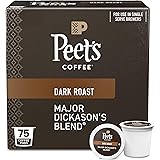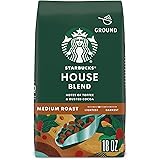Have you ever watched a barista at a specialty cafe meticulously prepare a shot of espresso, wondering about the precision and technique involved? That moment of focused extraction, the rich aroma filling the air, and the dense liquid pouring into a small cup—it’s an art form. As the video above demonstrates, a single espresso shot is more than just a small serving of coffee; it’s a concentrated experience, crafted with specific parameters to achieve unparalleled intensity and flavor.
Often referred to simply as an “espresso” in cafe settings, this foundational coffee beverage sets the standard for quality. While you might see two distinct streams pouring from a portafilter, as highlighted in the video, often only one of these streams comprises what’s served as a single espresso. This technique ensures consistency and allows for efficient service, but understanding the underlying principles is key to appreciating its complexity.
Deconstructing the Single Espresso Shot: Volume, Weight, and Intensity
The essence of a single espresso lies in its concentration. Unlike a larger coffee, an espresso is designed to be a potent burst of flavor. The video notes a typical volume of 20-30 milliliters or grams. Why the dual measurement? Because in the world of specialty coffee, weighing the output of your espresso shot is paramount for consistency and precision.
The difference between volume and weight is subtle yet significant. While 20-30ml is a general guideline for the liquid volume, factors like crema (the reddish-brown foam on top) can make a purely volumetric measurement less accurate. Crema is mostly gas and contributes little to the liquid mass. Therefore, weighing your espresso shot in grams provides a more reliable and repeatable measurement. For instance, the video specifically mentions their preference for a 21-gram yield, aligning perfectly with this precision-focused approach.
This careful measurement, whether aiming for 20 grams or 30 grams, ensures that each single espresso shot delivers that “very intense, concentrated beverage with a rich taste and smooth structure” that enthusiasts crave. The intensity comes from the high ratio of coffee solids to water, packed into a small serving.
The Critical Role of Brew Ratio in Espresso Perfection
Moving beyond just output weight, understanding the “brew ratio” is where true espresso mastery begins. Brew ratio refers to the relationship between the dry coffee dose (input) and the liquid espresso yield (output). While the video focuses on the yield (20-30g), the dose is equally important. A standard single espresso typically uses between 7 to 10 grams of ground coffee, though some modern specialty cafes might use slightly more in a single basket (if they are using one). Using a double basket and simply splitting the shot, as is common, means the barista is essentially using a typical double dose (around 18-20 grams) and letting half of that shot contribute to the served single espresso.
A common brew ratio for espresso falls between 1:2 and 1:3. This means for every 1 gram of ground coffee, you aim to extract 2 to 3 grams of liquid espresso. For example, if you use a 9-gram dose for a single shot, a 1:2 ratio would yield 18 grams of espresso, while a 1:3 ratio would yield 27 grams. These ratios significantly influence the taste profile:
- Shorter Ratios (e.g., 1:1.5 to 1:2): Often called a “ristretto,” these shots are even more concentrated, with a thicker body, lower acidity, and pronounced sweetness.
- Standard Ratios (e.g., 1:2 to 1:2.5): This range typically balances sweetness, acidity, and bitterness, creating a well-rounded and classic espresso flavor.
- Longer Ratios (e.g., 1:2.5 to 1:3): Sometimes called a “lungo” (though a true lungo often involves a coarser grind and longer extraction time), these shots tend to be lighter in body, with more prominent acidity and bitterness, and less intensity.
Experimenting with brew ratios is a core aspect of dialing in espresso, allowing baristas and home brewers to highlight different characteristics of the coffee beans.
The Art of Stirring: Unlocking Flavor Layers
The video offers a crucial piece of advice: “Before you drink it, it’s good to stir it so all the layers mix before you taste it.” This isn’t just a quaint ritual; it’s a scientifically sound practice that significantly enhances the espresso experience.
During the extraction process, espresso forms distinct layers in the cup due to differences in density and composition. The crema, light and airy, floats on top. Beneath it, the body of the espresso settles, with the denser, more extracted components at the bottom and the lighter, more acidic notes towards the top. If you sip without stirring, you’re likely to experience these layers sequentially, leading to an uneven taste profile.
Stirring the single espresso thoroughly homogenizes these layers, blending the rich sweetness, the vibrant acidity, and the subtle bitterness into a cohesive, balanced sip. This simple act unlocks the full spectrum of flavors the barista intended, ensuring a consistent and enjoyable experience from the first drop to the last. It allows the rich taste and smooth structure to truly shine, as the video alludes to.
Beyond the Shot: Parameters Influencing Your Single Espresso
Achieving that perfect 20-30 gram single espresso shot isn’t just about the final output. Several critical parameters interact to create the ideal extraction:
Grind Size: The Foundation of Extraction
The grind of your coffee beans is arguably the most impactful variable. Espresso requires a very fine, consistent grind, resembling powdered sugar. If the grind is too coarse, water flows through too quickly, resulting in an “under-extracted” shot that is weak, sour, and lacks body. Conversely, a grind that’s too fine impedes water flow, leading to an “over-extracted” shot that is bitter, astringent, and can taste burnt. Dialing in the grind—adjusting it incrementally—is a daily task for any serious espresso maker.
Dose and Tamping: Consistent Input
The coffee dose, or the amount of ground coffee used, must be precise. Using scales to measure your dose (e.g., 8-9 grams for a single basket) is as important as weighing your yield. Tamping, the act of compressing the coffee grounds into an even, level puck, removes air pockets and creates resistance for the water. A consistent, firm tamp ensures uniform water flow and even extraction.
Water Temperature and Pressure: The Driving Forces
Espresso machines operate at specific temperatures and pressures. Typically, water temperature is around 195-205°F (90-96°C), as this range best dissolves the desirable flavors and aromas from the coffee. The pressure, usually around 9 bars, forces the hot water through the compacted coffee puck, creating the emulsification and extraction characteristic of espresso. Deviations in either can drastically alter the shot’s quality.
Embracing the Journey of the Single Espresso
The single espresso shot, while small in volume, is a colossal achievement in coffee preparation. It demands precision, consistency, and a deep understanding of its constituent elements. As you’ve seen in the video, every detail, from the measurement of the yield to the simple act of stirring, contributes to a superior tasting experience.
Whether you’re a home barista perfecting your craft or simply an appreciative coffee lover, understanding these nuances elevates your enjoyment of this concentrated beverage. It’s about appreciating the “barista recipe & technique” that transforms a handful of beans into a moment of pure, intense coffee bliss, making each single espresso a testament to meticulous craftsmanship and passionate pursuit of flavor.







